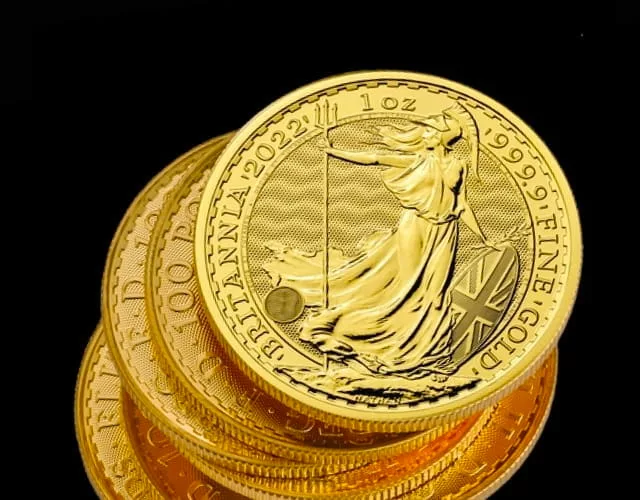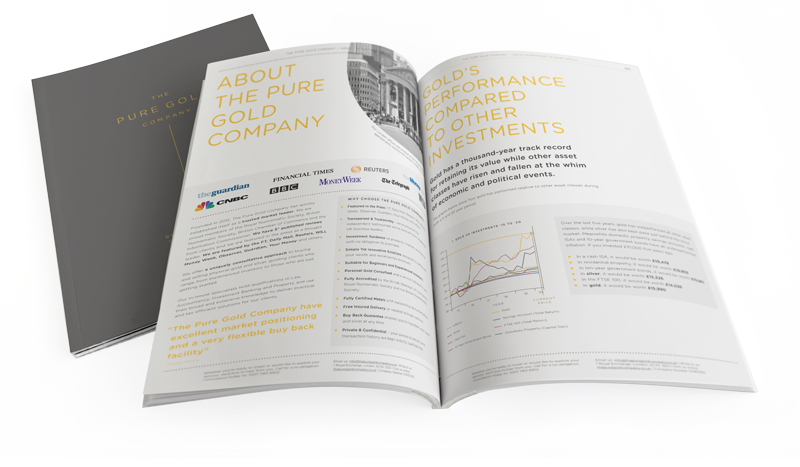About a fifth of all the gold ever mined is owned by countries. Over 35,000 tonnes of gold, worth hundreds of millions of dollars, is stored in vaults underneath cities worldwide, acting as a counterbalance to global economies. So who owns the most? Which countries are buying and which are selling? And are gold reserves still relevant and necessary decades after the end of the gold standard? With the advent of new forms of digital collateral, is Gold even still relevant to the global economy?
Who holds the most gold?
The USA has the largest gold reserves in the world, stockpiling 8,133 tonnes of gold as of the first quarter of 2021. This figure hasn’t changed much over the last 20 years, declining by only around 4 tonnes since the turn of the 21st century. America’s gold reserves are held in five central locations. The largest of these is Fort Knox in Kentucky, where over half its reserves are stored. Most of the rest is in deep vaults under Denver, West Point and New York.
German gold reserves
Germany holds 3,362 tonnes of gold in its reserves in a distant second place, down around 100 tonnes since 2000. Until 2017, two-thirds of Germany’s gold reserves were held outside the country, in the US, France and the UK. However, following a repatriation program, it now stores just over half its gold in Frankfurt. Italy and France have reserves of around 2,400 tonnes with relatively minor swings in ownership (France has sold about 500 tonnes).
Russia and China are building gold reserves
The two countries that have added substantially to their gold holdings in the last 20 years are the Russian Federation and China. Both have quintupled their precious metals stores. The Russian Federation holds around 2,300 tonnes today, up from just 422 tonnes in 2000. Likewise, China has increased its gold reserves from 395 tonnes to 1,948 tonnes, according to the World Gold Council.
The exact volume of China’s central bank gold reserves are not definitive though. China only announces its gold holdings periodically. In 2015 China disclosed a 60% jump in gold holdings that it had acquired over the previous six years.
Some market analysts put China’s gold reserves much higher than the official estimates. However, even if the calculations are correct, China has much more scope to add to their gold stocks because their central bank gold reserves only account for 3% of their total foreign exchange reserves. By contrast, US gold accounts for 77% of their foreign exchange reserves.
Buying and selling gold bullion
Countries buy and sell gold for various reasons. The UK infamously sold around half its gold reserves between 1999 and 2002, when gold prices were at their lowest in 20 years. The advance notice of the sale also managed to push the gold price down by 10%, and the staggered sale of so much gold meant the price remained depressed throughout the period. As a result, it was widely seen as one of the worst investment decisions. The gold was sold to diversify the UK’s assets away from gold, which was seen as volatile, and instead invested in foreign currency assets.
One outcome of the UK gold reserves sale in 1999 was a pan-European agreement by central banks to limit gold sales to 400 tonnes per year to avoid flooding the market with gold when several countries chose to sell. It was renewed for almost 20 years and finally ended in 2019 amid a changed gold landscape. Since the financial crisis in 2009, central banks have largely been buyers of gold rather than sellers. As a result, the risk of hundreds of tonnes coming onto the market and pushing down prices has receded.
Discover Gold’s Unique Tax Advantage
Most investments are subject to some form of taxation, but physical gold can be totally free of VAT and capital gains tax.

The gold standard
Western European and North American countries hold the majority of the world’s gold reserves. This is a legacy of the gold standard when currencies were linked to gold holdings, and you could redeem your dollars for the equivalent ounces of gold. The international gold standard operated from the 1870s until 1914 and was revived in the late 1920s and early 1930s. It meant the currency of a country was directly linked to gold, and paper money could be converted into a fixed amount of gold. Without the gold standard, the value of currencies is allowed to fluctuate against other currencies on the foreign exchange market.
During the years of the gold standard, countries would settle their trade deficits with gold which meant they needed to stockpile large quantities. When it finally ended in the 1930s, western economies were left with gold reserves. The US additionally forced its citizens to relinquish their gold in 1933, ostensibly to help rebuild the country after the great depression, and the US has had the largest gold reserves ever since.
Is gold still relevant as a reserve asset?
Most countries hold gold as a percentage of reserve assets, but not many hold as much as the US (77%). They also have foreign currency reserves (often the US dollar) or other commodities and other financial assets, which can be made available quickly if needed.
The rise of digital currencies
Gold has been a store of value for hundreds of years, but the rise of the digital society could be a harbinger of change. Digital currencies have become increasingly mainstream over the last two decades. Even governments are looking at developing their own. Central bank digital currencies are being trialled in China and investigated by the Bank of England. Although some years away, the tide of finance is moving online.
Gold supply
That said, the value of gold is in its intrinsic value and finite supply. It’s estimated that around 80% of the total gold in the world has already been mined. It’s a physical commodity that can be traded easily across the globe. While its value may fluctuate in the short term, gold continues to provide a safe haven asset that increases in times of uncertainty. Bitcoin-style cryptocurrencies come with an inherent risk of extreme volatility, which would not bode well for government reserves. A central bank digital currency needs to be backed by a similar foreign currency or gold in the same way that fiat currency is.
The demand for gold
The rise in central bank gold holdings looks set to continue this year, and retail investors should take a leaf out of their book. You can no longer walk into a central bank with currency and walk out with gold, but you can stock up your reserves and protect your assets with the precious metal.


